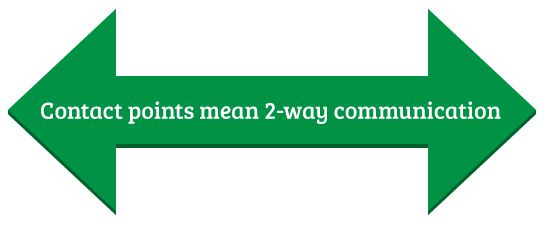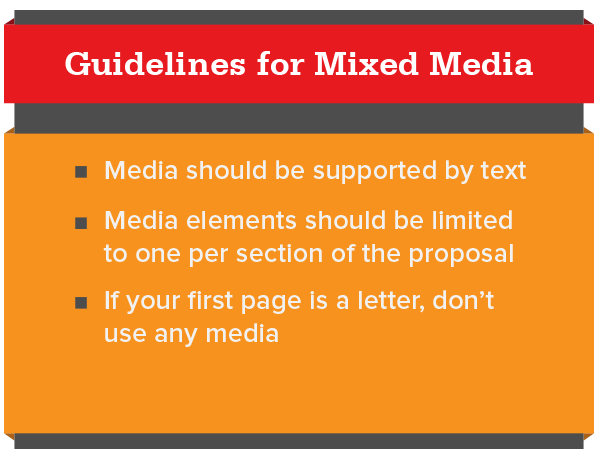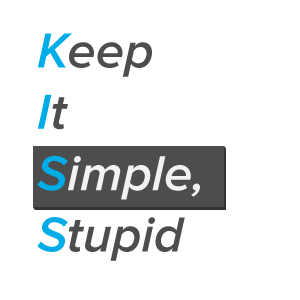The Right Format for an Easy-to-Sign Proposal
Choosing the right writing format for a business proposal can be quite challenging. You have to get it right the first time, so it can be understandably nerve-wracking to try to put together a cohesive business proposal that is also in the correct format for optimal readability. Writing a business proposal is further complicated by the fact that it is an exercise not only in writing, but also in editing, layout, and design – as well as a fully-involved sales process, on top of it all!
The format you choose can greatly affect how your reader interprets your proposal. This means that you will want to give great consideration to all the elements of your proposal’s format before tendering it to your prospective customer.
Your business depends on the effectiveness of your proposals, so the last thing you want is to let bad format choices get in the way. Fortunately, there are some best practices you can keep in mind when it comes to choosing a winning writing format.
We have discussed writing winning proposals quite a bit around these parts (to say the least!), covering various aspects of planning and proposal writing at length. So this month, I thought we would take the business of writing to a discussion on a deeper level, exploring the nuts and bolts of choosing the right form and style to win, again and again. While further exploring much of what we’ve already perused in older posts, we’re honing in on some of the make-or-break elements of business writing.
Here’s what we’ll cover:
- Implementing a sales-friendly format in proposal writing
- Layout and design format considerations
- Writing format for business proposals
Implementing a sales-friendly format in proposal writing
We’ve talked about it extensively before, but it’s always worth repeating that a business proposal is a sales tool before. With that in mind as you begin writing, your proposal should adhere to the steps in the sales process. Every sales interaction has distinct greeting, qualifying, offering, and closing phases, and you likely already know that your proposal should generally follow those steps from start to finish.

The Wikipedia entry for “proposal (business)” says the following:
Business proposals are often a key step in the complex sales process—i.e., whenever a buyer considers more than price in a purchase.
While that is true, we here at the Quote Roller HQ have a slightly different take on the way a proposal relates to sales. We prefer to think that business proposals should follow a writing format that mirrors the well-established selling format, in addition to fitting within the “complex sales process” overall. In this way, the business proposal writing both fits into your sales process and mirrors it.
You can put the sales process to work in writing your proposal, right down to the sections of the proposal itself.
Consider the following as you plan your proposal writing:
- First section: Greeting
- Second section: Qualifying
- Third section: Offering
- Fourth section: Closing
Take a look at one of our sample proposals and you’re likely to notice that it contains a separate section that addresses each part of the sales process – even if it doesn’t appear to do so obviously, at first glance. A winning proposal follows a writing format that compartmentalizes each step of the sales process.
There’s nothing to be afraid of when it comes to choosing the sequence of the sections in your proposal writing. If you know sales, you automatically know the basic format for writing a winning business proposal. It’s easy to keep your proposal on-track, just by following the well-established sales format in your proposal writing.
Give the reader a chance to respond
One thing you’ll want to do differently from most real-world sales processes is to offer the customer an opportunity to respond directly to your business on every page, and thus at every step in the sales process. Whether you opt for a contact form, a simple hyper-linked button (connected to your email), or allow them to annotate right there in your Quote Roller web-based proposal, you want to give the reader the ability to ask a question on each page of your proposal.
Think of landing pages on modern websites – there’s a way to get in contact with the business on every page. Your business will benefit from adhering to the same format in your proposal writing efforts, since the same logic applies in any text-based sales process in the digital space. There is also support for the idea that, in general, more landing pages equate to more sales.

The pages of your proposal are not inbound landing pages, but there are certain corollaries, especially when it comes to offering contact buttons in-page. When you offer a contact point on every page of your proposal, you open up your proposal to more chances to be accepted. This keeps the sales process involved in the proposal interactive, allowing for two-way communication.
Layout and design considerations
Speaking of free proposal templates, please note that we’ve got more than 35 sector-specific templates to help you get started in the right direction when crafting proposals. If you check out our samples, you’ll start to see a few trends emerge. While our various templates do not follow a rigid format — wedding planning is very different from construction, web design quite different from cleaning services — they all have a lot in common, while adapting to suit various specific types of businesses.
Here are a few key points to consider during proposal writing:
- 10 -12 point fonts are used (plus larger headings)
- Funky or non-standard fonts are avoided (if you decide to send it the old school Word doc way, imagine if your client can’t read it at all because they don’t have that font?)
- Sub-heading are bolded
- Each page has its own sub-title
Of course, do note that Quote Roller can automate all the textual formatting for you, allowing you to focus on the actual sales message in your writing. It’s like with your C.V./resume. Have you ever opened it on different computers and you get irritated that the formatting you spent so much time on looks like a disaster? If you send it as an online doc or PDF, it doesn’t distort. You want the same thing for your business proposals.
Make your proposal dynamic & memorable with multimedia formatting
Proposal writing should follow a document-like design format, but that does not mean that you cannot dress up your proposals, so long as you do so tastefully.
One of the great things about writing and sharing proposals in a digital format is that you can incorporate mixed media, like video and HTML, in interesting and engaging ways. While it’s tempting to turn your proposal into a multimedia extravaganza, a little restraint is probably the best recipe for success.
If you would like to integrate mixed media into your proposal, keep the following in mind:
- Media should be supported by text
- Media elements should be limited to one per section of the proposal
- If your first page is a letter, don’t use any media

Mixed media can really fix up a drab proposal, but you don’t want to ignore the time-honored usefulness of images. Images are a great way to convey an idea succinctly in a proposal. Here are some design considerations for use in business proposals:
- Support images with captions (ideally, action captions)
- Choose images that are memorable – humans use visuals to help them remember
- Favor relevant graphs and flowcharts over generic images (as in clip art)
- If you use a third-party infographic, as we all do these days, be sure to give credit where credit is due – cite your sources
- If you work in some sort of creative field, use images or video wisely to show off your work (A photo really says more than a thousand words of boring proposal text.)
- If you work in any type of service, a video testimonial from a satisfied customer is a good way to offer your company credibility
- And if you sell a something — especially a pretty one — feel free to integrate the photos in with your pricing catalog
No matter what type of media you opt to add to your proposal, you want to make sure it both supports and is supported by the message you are trying to convey to your audience and the best way to do that is with thoughtful formatting.
Writing format for business proposals
We’ve touched on the topic of the sales writing format, itself, in the past, but here are a few detailed ideas to help take your proposal writing to the next level. Since every aspect of writing the proposal matters, right down to the tone and verbiage used in writing the proposal, you’ll want to make sure you’re using a winning format when you write your next business proposal.
Keep it concise
 KISS is the writer’s code: Keep It Simple, Stupid. A business proposal is not place for long-form prose. Concision trumps all when it comes to writing business proposals. For me, the “bible” of writing in a sales-friendly format has always been Claude C. Hopkins’ Scientific Advertising, though there are many other great resources out there that tell much the same story.
KISS is the writer’s code: Keep It Simple, Stupid. A business proposal is not place for long-form prose. Concision trumps all when it comes to writing business proposals. For me, the “bible” of writing in a sales-friendly format has always been Claude C. Hopkins’ Scientific Advertising, though there are many other great resources out there that tell much the same story.
In short, as any great copywriter would tell you, writings intended to sell – or in our world, to get a deal signed – should be free from superfluous language and should speak directly to the actions you would like the customer to take. The best format for your proposal, as Hopkins and others will tell you, is a simple one which is able to be understood by as many readers as possible.
Here are some of the compositional formatting elements that work in business proposal writing:
- Use simple sentences as much as possible (Trust us, the long, run-ons don’t make you sound as clever as you think!)
- Use clear language, avoiding allusions and figures of speech
- Use short paragraphs, usually no more than three sentences
In addition to working well for sales, concise writing has the additional benefit of being easier on the reader’s eyes, which is always a plus, as it guarantees they will keep on reading.
Eliminate all platitudes
One of the many great takeaways from Scientific Advertising is the need to reduce word count by eliminating ineffectual adjectives from your writing. One of my favorite passages in Hopkins’ book comes at the start of chapter seven, “Be Specific”:
“Platitudes and generalities roll off the human understanding like water from a duck. They leave no impression whatever. To say, ‘Best in the world,’ ‘Lowest price in existence,’ etc. are at best simply claiming the expected. But superlatives of that sort are usually damaging. They suggest looseness of expression, a tendency to exaggerate, a careless truth. They lead readers to discount all the statements that you make.”
The biggest problem with the use of platitudes in the context of a sales writing format, as Hopkins alludes to above, is that they compromise the element of trust needed in business relationships. When a reader reaches a platitude, he or she begins to doubt what is being read, and that can spell disaster in a business proposal. You have to work hard to gain and retain trust in your proposal writing, don’t let platitudes destroy the trust you’ve worked so hard to earn.
Choose the right (grammatical) person
One of the first choices you have to make when it comes to writing a business proposal is that of grammatical person. Sorry to take you back to composition class, but proposal writers should be aware that the concept of grammatical person is described as “the relationship between the speaker and other participants.” The rules of grammatical person help you to be able to choose the appropriate personal pronoun in a given sentence. As you can imagine, grammatical person is very important in writing a business proposal.
Grammatical person has an effect on the overall tone of a piece of writing. The use of first and second grammatical person throughout a piece of writing sets a conversational tone, which may very well be appropriate in some situations. Likewise, use of the third person tends to impart a formal tone for the reader (the use of third person is often even called “formal style” as a result). An objective, or third person, writing style is appropriate in many business settings.
So how do you decide what format is appropriate to use in writing your proposal? That depends loosely on a few factors, including the type of business you are conducting and who your recipient is. Here are a few pointers.

Reasons to use the first/second-person format:
- Your business is just one person (such as a freelancer), not a team of people
- Your recipient is a single-person business
- If a conversational tone fits your business’ overall strategy/culture/ethos
- If your services offered are person-to-person (such as care giving, physical therapy, etc.)
- You have an established relationship with your recipient, even if an organization
Reasons to use third-person format:
- If the recipient is a government organization
- If the recipient is a corporation, non-profit, or other large organization
- If you operate in one of the many business-to-business fields where formality is generally expected
- If you do not have an established relationship with the recipient (even if it is just one person)
You may also find a reason to switch between grammatical persons within your proposal writing. For example, if you choose to include a cover letter or personal statement as the introductory page, you might use first/second person throughout that page, but switch to the third person objective style for the remaining pages in the proposal.
As a caveat to choosing the right grammatical person overall, note that the rules for personal pronouns also help readers understand when a person is being referred to versus when a business entity is being referenced. Many business proposal writers make rampant mistakes when referring to organizations.
For example, “Microsoft” is always gender neutral (it/its), whereas “Bill Gates” always adopts the masculine personal pronouns (he, his, him) and can function in pluralities of people (we/us/our/they/them/theirs). Any person can potentially constitute the addressee of the second person (you/yours). This is a detail that will greatly improve the overall readability of your proposal.
Keep your eyes (and theirs) on the prize
Okay, grammar lesson over, back to business.
You may be tempted to throw everything and the kitchen sink into your proposal writing efforts, but the best advice is to keep the readers focused on the ultimate prize of winning the bid.
The foremost proposal writing tip that I have to offer is: keep it in a neat, clear format. If you overload the proposal with anything, be it writing, images, or media, you run the risk of having it read like a hot mess, for lack of a better term.
Your proposal is meant to cause an “actionable outcome” (as is popular to say these days), so it should follow a format that is shaped around resulting in a buying action. If your proposal assumes a format that keeps your offer clear, its benefit to the prospect, and makes it easy to be awarded, you’ve done your job. Impart all the singularity of purpose you can to your proposal writing and you will win more bids.
Are you writing in the right format?
Writing anything can be an arduous process. Half the battle is found in understanding the format you need to be working in. When it comes to proposal writing, following a sales format is the first step. Compound that sales format to a clear, concise, and grammatically correct writing format, and you will have a recipe for success.

Comments